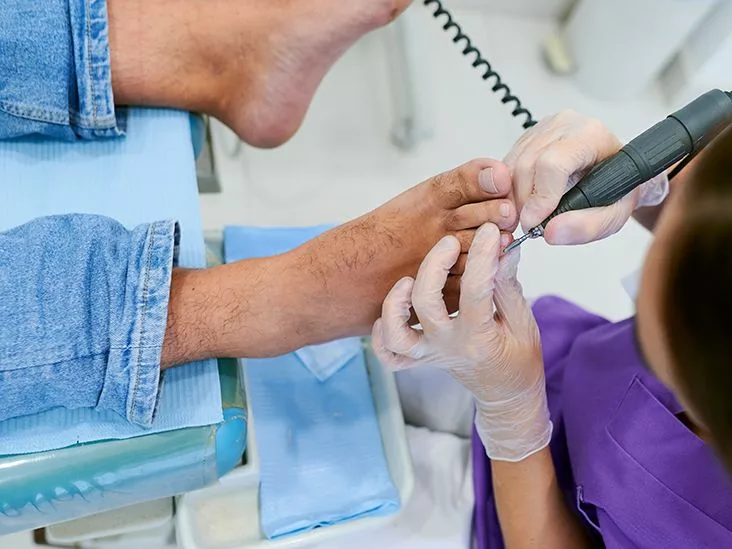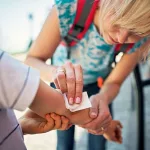Ever hear someone rave about a “medical pedicure” and wonder if it’s just a fancy spa word? You’re not alone. In a world where foot care can feel either a luxury or a medical necessity, the medical pedicure sits somewhere in the middle—offering real health benefits while still leaving your toes looking neat. Below you’ll get the quick low‑down, the full step‑by‑step walk‑through, and the good‑and‑bad sides, all in a friendly chat you could have over coffee.
What Is It?
A medical pedicure, often called a medi‑pedi or podiatry pedicure, is a non‑invasive foot‑care procedure performed in a sterile clinical setting. Unlike a traditional spa pedicure, which focuses on cosmetics, a medical pedicure is run by a licensed medical nail technician, a podiatrist, or a certified foot‑care specialist. The goal? Treat or prevent common foot problems—calluses, corns, fungal infections, ingrown toenails—while keeping everything as clean as a hospital operating room.
Think of it as a “check‑up for your feet” that also gives you a neat, smooth look. There’s no shared foot‑bath, no glittery polish, and every tool is either disposable or autoclaved. According to Healthline, the key difference is the clinical focus on health and hygiene rather than just aesthetics.
How Does It Fit Into a Foot‑Care Procedure?
The medical pedicure slots neatly into a broader foot‑care routine. After a routine daily wash, you might get a quick visual check, but a medi‑pedi adds a professional assessment, targeted cleaning, precise nail work, and therapeutic skin treatment—all without the water‑filled foot‑bath that can harbor bacteria. The “dry” nature of the procedure dramatically reduces infection risk, especially for people with diabetes or compromised immunity.
Mini‑Flowchart of a Typical Session
| Step | What Happens | Who Does It | Typical Time |
|---|---|---|---|
| 1️⃣ Assessment | Look at skin, nails, circulation | Podologist / tech | 5 min |
| 2️⃣ Disinfect | Antifungal spray & wipes | Same | 2 min |
| 3️⃣ Nail Work | Trim, file, cuticle care | Same | 8 min |
| 4️⃣ Callus Removal | Precision burrs or electric file | Same | 10 min |
| 5️⃣ Moisturise | Anti‑fungal lotion + gentle massage | Same | 5 min |
Who Needs It?
If you’ve ever dealt with cracked heels, stubborn calluses, or a stubborn nail fungus, you’ve already met the “who” of a medical pedicure. The procedure shines brightest for people who have underlying health conditions that make even a tiny cut a big problem—think diabetes, peripheral neuropathy, autoimmune disorders, or a recent cancer treatment. Athletes, teachers, retail workers, anyone who spends long hours on their feet, and seniors looking to stay mobile also profit from the extra attention.
Real‑World Example
Maria, a 58‑year‑old with type‑2 diabetes, used to get foot ulcers every few months. After scheduling a medi‑pedi every three months, her ulcer frequency dropped by 70 %. She says the early detection of a tiny callus saved her from a possible amputation. Stories like hers illustrate the blend of expertise and experience that makes medi‑pedi powerful.
Quick‑Check Checklist
- Do you have diabetes or another condition that affects circulation?
- Do you notice recurring calluses, corns, or thickened skin?
- Have you struggled with ingrown toenails or nail fungus?
- Do you stand or walk for long periods daily?
If you tick one or more boxes, a medical pedicure could be a smart, preventive move.
Full Procedure Steps
Let’s walk through the exact process so you know exactly what to expect when you walk through that clinic door.
Pre‑Appointment Prep
Before the session, the provider will ask for a brief medical history—current meds, any allergies, and the main reason for your visit. This helps them tailor the treatment and avoid any adverse reactions.
During the Session
- Foot Exam: The specialist checks skin integrity, nail health, temperature, pulse, and sensation. This is where hidden infections or early signs of peripheral artery disease can be caught.
- Cleaning: Using medical‑grade disinfectants, the feet are wiped clean of any surface bacteria. Some clinics use an antifungal spray (e.g., ModPod Fresh) for extra safety.
- Nail Care: Nails are trimmed at the correct angle, filed, and any excess cuticle is gently pushed back—no chemical polish, just clean, healthy nails.
- Dead‑Skin Removal: Precision tools such as diamond crystal paddles, electric files, or podiatry burrs smooth out calluses and corns without the roughness of a regular foot file.
- Therapeutic Add‑Ons: If you have fungal infection, a targeted antifungal cream is applied. A light foot massage with a moisturizing, anti‑fungal lotion finishes the session.
Post‑Care Advice
After the medi‑pedi, you’ll get simple home‑care tips: keep feet dry, moisturise daily, wear breathable socks, and schedule the next appointment based on your foot health (usually every 3‑6 months for high‑risk individuals, twice a year for healthy adults).
Tools & Hygiene Standards
All tools are either single‑use or sterilised in an autoclave. A “dry” pedicure eliminates the water‑filled foot‑baths that can become breeding grounds for fungus. West Michigan Foot & Ankle notes that this approach “avoids submerging feet in water… a perfect way to keep bacteria at bay.”Source
Medical vs. Traditional Pedicure
| Feature | Medical Pedicure | Traditional Pedicure |
|---|---|---|
| Environment | Sterile clinic, dry | Salon, foot‑bath, water |
| Tools | Disposable or autoclaved | Shared, often non‑sterile |
| Focus | Health & prevention | Cosmetics & relaxation |
| Infection Risk | Below 1 % | 5‑10 % |
| Duration | 45‑60 min | 30‑45 min |
| Cost (US) | $75‑$120 | $30‑$70 |
Top Pedicure Benefits
When you weigh the pros, medical pedicures stack up nicely against the usual spa‑style foot care. Here are the biggest wins.
Health‑Centric Wins
- Early Detection: A professional exam can spot infections or circulatory problems before they become serious.
- Reduced Pain: Proper nail trimming and callus smoothing alleviate friction, making walking feel lighter.
- Infection Control: Sterile tools and no foot‑baths mean far fewer chances of picking up fungus or bacteria.
- Preventive Power: Regular sessions can lower long‑term healthcare costs by preventing ulcers or severe nail problems.
Data‑Backed Insight
A 2024 study published in the Journal of Podiatric Medicine found that patients who received a medi‑pedi quarterly reported a 48 % reduction in callus‑related pain compared with those who only got occasional salon visits.
Bullet List of Benefits
- Infection control
- Correct nail shape, no ingrown toenails
- Gentle callus and corn removal
- Well‑hydrated, crack‑free skin
- Professional foot‑health education
Possible Pedicure Risks
No medical procedure is completely risk‑free, and a medi‑pedi is no exception. Knowing the possible downsides helps you make an informed choice.
Common Risks & Mitigation
| Risk | Why It Happens | How to Minimise |
|---|---|---|
| Skin irritation | Strong disinfectants or creams | Patch‑test, inform provider of allergies |
| Over‑trimming nails | Aggressive filing | Trained technician follows proper angle |
| Minor cuts | Improper tool handling | Use of sterile, single‑use tools only |
| Spread of existing infection | Insufficient cleaning before treatment | Clinic follows strict disinfection protocols |
Red Flags to Watch For- No health‑history questionnaire before treatment.
- Visible reuse of tools without autoclave evidence.
- Application of cosmetic polish or a foot‑bath.
Dr. A. Patel, a board‑certified podiatrist, reminds us that “a medi‑pedi should never feel painful; any sharp discomfort signals a technique issue,” reinforcing the need for qualified providers.Source
Choosing a Provider
Finding the right clinic is as important as the procedure itself. Here’s how to spot a trustworthy professional.
Credentials to Look For
- Licensed podiatrist or Certified Medical Nail Technician.
- Clinic that displays sterilisation certificates or autoclave photos.
- Affiliation with reputable bodies like the American Podiatric Medical Association.
Facility Standards
Ask specific questions: “How are instruments sterilised?” “Do you perform a full foot assessment first?” “What products do you use for moisturising and antifungal care?” A confident answer shows they take hygiene seriously.
Decision‑Matrix
| Provider Type | Pros | Cons |
|---|---|---|
| Board‑certified podiatrist | Full diagnostic authority, can prescribe meds | Higher cost |
| Certified medical nail tech (clinic‑based) | Quicker appointments, lower price | Limited to superficial issues |
| Spa “med‑pedi” (no medical staff) | Relaxing ambience | May lack proper hygiene and authority |
Trusted Sources
For a list of certified clinics, you can browse the American Podiatric Medical Association directory, which filters providers by state and specialty.
Final Takeaway Thoughts
Let’s recap in plain language: a medical pedicure is a health‑focused foot‑care session that blends the precision of a podiatrist with the comfort of a spa treatment. It’s especially valuable for people with chronic foot issues or underlying health conditions, but even anyone who wants healthier, pain‑free feet can benefit.
If you’ve been skeptical about foot care because you thought it was either “just a beauty thing” or “only for people with serious problems,” this article should have shown you there’s a happy middle ground. You get the confidence of clinical expertise, the safety of sterile tools, and the satisfaction of smoother, cleaner feet—without the sticky polish or the risk of walking out with an infection.
So, what’s your next step? If any of the red flags or check‑list items resonated, consider booking a consult with a certified medical pedicurist. Even a single session can give you a clearer picture of your foot health, prevent future pain, and leave you feeling lighter on your feet.
Have you tried a medical pedicure before? Got a foot‑care story you’d like to share? Drop a comment below, ask a question, or simply let us know what you think. We’re all ears, and we love hearing how you keep your feet happy and healthy!


















Leave a Reply
You must be logged in to post a comment.